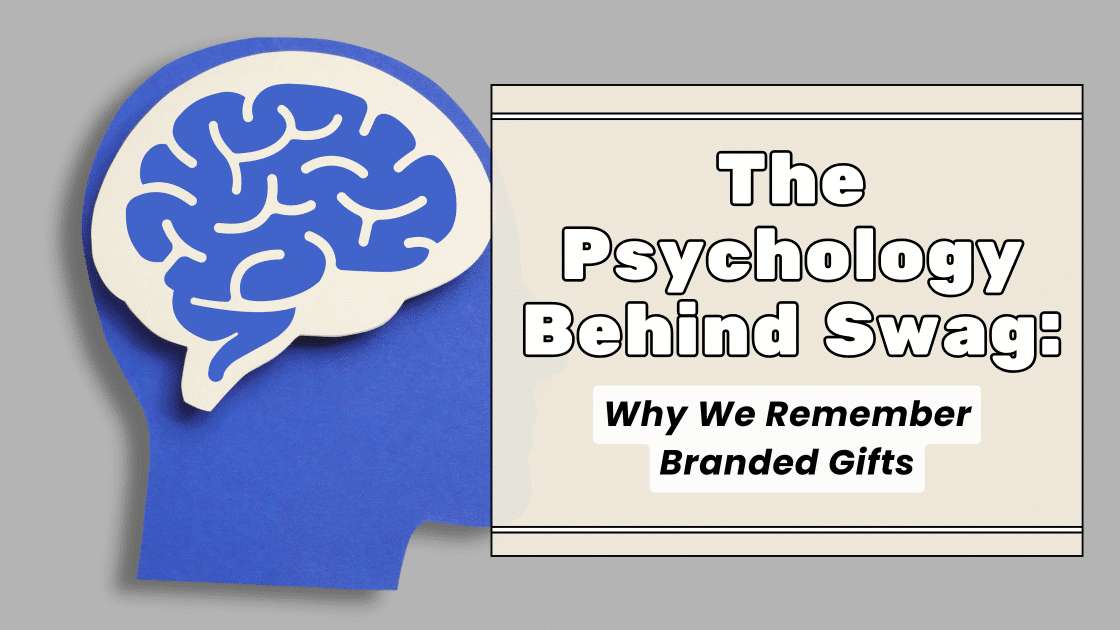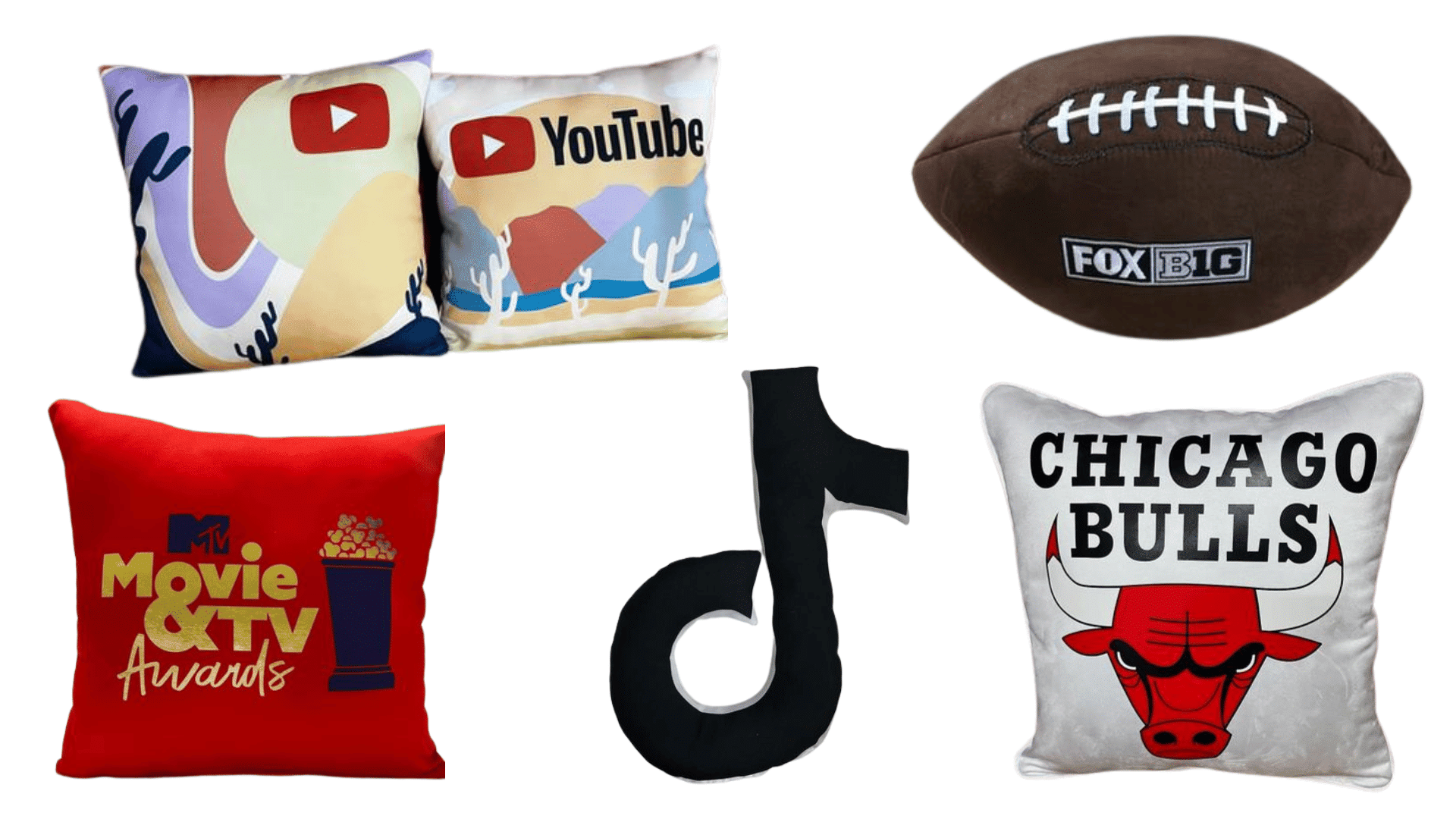You know that feeling when you find a really good piece of swag at an event and it somehow becomes part of your daily routine? That is not an accident. Studies show that a huge majority of consumers are more likely to do business with a brand after receiving a promotional product, and many remember the brand long after the campaign is over. Swag lives on desks, in bags, on kitchen counters and in travel routines, quietly doing the work of brand marketing long after a billboard or social post disappears.
At JNP Merchandising, we live in that world every day.
We see firsthand which branded gifts get tossed aside and which ones become favorites that people talk about months later. In this article, we are pulling back the curtain on the psychology behind swag, so you can choose pieces that feel intentional, modern, and totally on brand.
If you want your next giveaway to do more than “check a box,” keep reading.
Understanding Swag: What Are Branded Gifts and Why Do Companies Use Them?
Branded gifts, corporate swag, promotional products, business giveaways, marketing merchandise. Different names, same core idea. Swag is any physical item that carries your brand identity and is gifted to a client, employee, partner, or prospect. Think premium drinkware, tech accessories, apparel, travel gear, desk items, and custom event kits.
Companies use branded merchandise because it does something most other marketing channels cannot. It sits in your audience’s real life. While an ad disappears when you scroll, a great mug or hoodie stays in circulation for months or years. That is repeated exposure and subtle brand reinforcement every time the item is used.
Swag works especially well when it fits into a bigger strategy:
- Launching a new product or initiative
- Welcoming VIP guests or speakers
- Rewarding loyalty or top-performing teams
- Elevating live events, conferences, or retreats
Pro tip: Before picking a single product, define the purpose of the campaign. Are you trying to spark conversations, reward loyalty, or drive follow up after an event? Your “why” should guide what you give.
Swag is not just free stuff. It is a strategic brand touchpoint that can carry your message into the everyday lives of the people you care about most.
The Science of Memory: How Our Brains Recall Promotional Items
Our brains are wired to remember certain types of experiences more than others, and swag taps into that. When someone sees, touches, and uses a branded item repeatedly, it creates layers of memory. Visual branding impact, sensory details, and context all matter.
Visual cues are huge. Clear logos, thoughtful color choices, and distinctive design make it easier for people to recall your brand later. That is why minimal, polished branding often performs better than cluttered layouts. Your item should feel like a design object first and an advertisement second.
Sensory marketing plays a big role too. Texture, weight, and even sound can all become recall triggers. A soft-touch notebook cover, a perfectly weighted pen, or a water bottle that closes with a satisfying click all quietly signal quality. When a product feels good to use, it becomes more memorable.
How to design for memory:
- Keep branding clean and legible, especially your logo
- Use colors that align with your brand and stand out in real life
- Choose products with a premium feel that engage sight and touch
- Think about where the product will live: desk, commute, gym, travel
Pro tip: Ask yourself, “Would I use this if it did not have a logo on it?” If the answer is no, keep looking. The best swag would still be desirable even without branding.
Memory is built through repeated, positive interactions. When swag looks good, feels good, and fits into daily routines, your brand becomes easier to remember.
Emotional Connections: How Swag Builds Positive Brand Associations
People do not just remember swag. They remember how it made them feel. Emotional branding is what turns a free gift into a positive brand association.
When someone receives a thoughtful, high-quality item, they feel seen and valued. The gift becomes a symbol of the relationship: “This brand cares about the details. They understand my lifestyle.” That is where brand loyalty starts to deepen.
Branded gifts can:
- Make a stressful event feel more welcoming
- Turn a standard meeting into a “wow” moment
- Help remote teams feel more connected
- Make VIPs feel like true insiders
The key is alignment. Your swag should reflect your brand’s personality. A sleek tech company might opt for custom chargers and elevated apparel. A wellness brand might curate aromatherapy kits, weighted eye masks, and sustainable drinkware.
Pro tip: Always match the tone of the gift to the tone of the relationship. Executive-level partners should not receive the same swag as general event attendees. Create tiers for different audiences.
Swag is emotional. When you treat it as a small act of hospitality rather than a transaction, you build deeper, more authentic connections with your audience.
The Reciprocity Principle: Why Receiving Freebies Makes Us Want to Give Back
There is a well documented psychological trigger called the reciprocity principle. In simple terms, when someone gives us something, we feel a natural pull to give something back. It might be attention, time, loyalty, or a decision to do business.
In marketing, this is why well timed gifting can be so powerful. A premium, thoughtful item at the right moment can nudge someone to:
- Take a meeting or schedule a follow up
- Explore your website or product line
- Choose you over a competitor
- Stay loyal even when other options are available
This only works, though, when the gift feels genuine, not manipulative. If the swag feels cheap, random, or purely promotional, it can have the opposite effect.
How to use reciprocity the right way:
- Gift before the “ask,” not after
- Make the gift feel personal and context aware
- Avoid clutter items that feel like waste
- Pair the swag with a warm, human message, not a hard sell
Pro tip: Use gifting to open doors, not close deals. Your swag should say, “We are investing in this relationship,” not, “You owe us now.”
The reciprocity principle is powerful, but it only works when your gifting is authentic, thoughtful, and aligned with your brand values.
Quality Over Quantity: The Role of Useful and Unique Gifts in Lasting Impressions
The fastest way to make your swag forgettable is to prioritize volume over value. Today’s audiences are more aware of sustainability, clutter, and quality than ever before. If it feels like junk, it reflects poorly on your brand.
High-quality swag, on the other hand, sends a very different message. When your branded gifts are useful, unique, and durable, people keep them longer and interact with them more often. That means more impressions and a stronger lasting brand impression.
Think about:
- Premium materials over novelty plastic
- Items people actually need in their day to day life
- Elevated design that feels current, not dated
- Size and portability for people who travel often
Examples of useful, high impact items:
- Branded drinkware that fits in cupholders and feels sturdy
- Tech accessories like wireless chargers or travel cables
- Thoughtfully cut apparel that people actually want to wear
- Travel pouches, dopp kits, or packing cubes
Pro tip: If your budget is limited, choose fewer recipients and upgrade the quality, instead of spreading low value items across everyone. The long term payoff is almost always better.
Quality is remembered. One great piece of swag that gets used every week is worth more than a box of forgettable trinkets.
Nostalgia and Storytelling: Using Swag to Create Memorable Brand Stories
Some of the most powerful branded gifts are the ones that tell a story. Nostalgia marketing taps into memories, identities, and shared experiences. When swag connects to a moment in time, a culture, or a community, it stops being “a promo item” and becomes part of someone’s personal story.
For example, a limited edition item tied to a milestone event can become a keepsake that people refuse to throw away. A design that nods to retro graphics, local culture, or a meaningful theme can spark instant emotional recognition.
At JNP, we lean into this with curated collections for special occasions. Get inspired by Jeff Pofsky’s birthday showcase and our custom touches. That kind of thoughtful curation shows how swag can capture a moment, a personality, and a brand all at once.
Ways to use storytelling in your swag:
- Tie items to a specific theme, campaign, or inside joke
- Use packaging to explain the story behind the gift
- Limited runs or “drops” that feel collectible
- Designs that reference shared experiences within your community
Pro tip: Think beyond the logo. Use typography, illustration, and short copy to tell a mini story on the product itself or on the insert card.
When your swag carries a story or a sense of nostalgia, people keep it, talk about it, and associate that feeling with your brand.
Maximizing Impact: Best Practices for Choosing Effective Company Swag
If you want to maximize ROI on your branded merchandise, you need a clear strategy. Choosing company swag is not just about what looks cool in a catalog. It is about who you are targeting, why you are gifting, and how the items will live in the real world.
Here is a simple framework we use with our clients:
- Know your audience.
- Executives, creators, sales teams, and event attendees all have different needs.
- Build profiles for each segment so your choices feel tailored.
- Clarify the objective.
- Are you driving event attendance, thanking VIPs, onboarding new hires, or supporting a product launch?
- Your objective should guide the type, quantity, and level of product.
- Align with your brand identity.
- Colors, materials, and packaging should look and feel like “you.”
- If your brand is modern and minimal, keep the design clean and elevated.
- Prioritize usefulness and longevity.
- Choose items that people will use weekly or daily.
- Avoid items that are seasonal or hyper specific unless that is part of the story.
- Think in collections, not one-offs.
- Curated kits can tell a stronger story than single items.
- Pair complementary products, like premium drinkware, travel accessories, and apparel.
Pro tip: Work with a partner who lives in this world every day. At JNP Merchandising, our team tracks what is trending, what is timeless, and what flopped last season so you do not have to guess.
Effective swag is strategic. When you match the right audience, purpose, and product, your branded gifts start feeling less like “giveaways” and more like brand experiences.
Harnessing the Power of Psychology for Unforgettable Branded Gifts
When you understand the psychology behind swag, you stop ordering “stuff” and start designing moments. You are no longer just handing out pens and tote bags. You are making your brand memorable with swag, creating lasting brand impressions, and leveraging psychology in promotional products to support real business goals.
The next time you plan a campaign or event, treat gifting as a strategic move, not an afterthought. Tap into memory, emotion, reciprocity, quality, and storytelling. Choose pieces that feel like they could only have come from your brand.
If you are ready to take action with strategic gifting, we are here to help you build a swag program that people will actually love, use, and remember.





